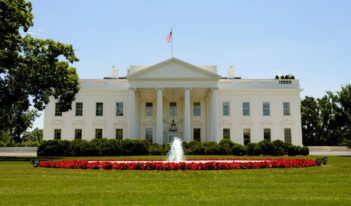
Scholar argues that President Trump’s deregulatory agenda was not successful in the long term.
In just four years, the Trump Administration rolled back over 100 environmental rules, including those designed to reduce carbon dioxide emissions, cut methane emissions, protect wetlands, and conserve public lands.
In a recent article, Stephen Johnson argues that although President Donald J. Trump’s short-term deregulatory record was successful, his long-term record was not.
President Trump used executive orders, the Congressional Review Act (CRA), legislative rulemaking, and court-ordered suspensions of activity to reverse longstanding environmental rules, Johnson notes.
Some of these actions are quick processes that are limited in permanence; successors can easily undo them. And the Biden Administration has done just that. When President Joseph R. Biden took office, he reversed many of President Trump’s efforts, indicating how hard it is for presidents to deregulate more permanently, Johnson explains.
President Trump often used executive orders as a centerpiece of his deregulatory agenda and he often ordered the U.S. Environmental Protection Agency to rescind regulations, Johnson says.
A president can implement executive orders quickly without the cooperation of other branches, Johnson explains. He notes that presidents cannot change the law through executive orders, though. They can only direct agencies to exercise their discretion to do so.
Shortly after taking office, for example, President Trump issued a “stop work” executive order. This order required all agencies to stop working on rules, withdraw final rules that had not yet been published in the Federal Register, and suspend rules that had been published but had not yet become effective. In many cases, courts invalidated these suspensions, finding that agencies suspended rules in ways that exceeded their authority.
The lack of procedural requirements for executive orders makes them appealing deregulatory tools but also ensures that a new administration can rescind the changes just as easily, Johnson argues. When President Biden took office, he issued Executive Order 13,990, which revoked nine Trump-era deregulatory executive orders. He also ordered agencies to review over 100 environmental rules, guidance documents, and policies aimed at deregulation adopted during the Trump Administration.
President Trump had similarly limited success using the CRA to deregulate, Johnson argues.
The CRA authorizes Congress to disapprove agency rules and then prohibit an agency from adopting another rule that is “substantially the same” as the disapproved one. Since Congress is prohibiting an agency from readopting a rule, the CRA can provide more permanence than executive orders, Johnson notes.
The CRA, though, has its own limitations, Johnson suggests. The CRA is only effective when the president and Congress are “united in their pursuit of specific deregulatory goals,” Johnson says. The CRA also requires Congress to introduce a disapproval resolution within 60 legislative days after a rule’s adoption. And the CRA requires 10 hours of debate in the Senate for each disapproval resolution. Although President Trump had a Republican majority in Congress when he took office, he only used the CRA to revoke four environmental rules because of these requirements.
The Trump Administration also used legislative rulemaking to deregulate, Johnson explains.
He says that legislative rulemaking is the only tool that allows presidents to unilaterally eliminate rules adopted through previous rulemaking. Scholars have observed, however, that the notice-and-comment process can take five or more years. Agencies must also thoroughly explain why they are making such changes, and if they do not, courts will reject the rule as “arbitrary and capricious,” Johnson cautions. He further notes that a legislative rule is not a law, and a future administration can revoke it in much the same way that a previous administration adopted it.
The Biden Administration is now revoking many of the environmental rollbacks that the Trump Administration achieved through legislative rules that courts have not yet invalidated. The courts have, however, been a steady source for reversals of many of these legislative rules. Federal courts upheld Trump-era environmental rules in only about 20 percent of the cases in which they were challenged, as opposed to the historical rate of about 70 percent, Johnson highlights.
In addition, the Trump Administration relied on court-ordered suspensions to deregulate. Many administrations order agencies to suspend rules that have not been published or taken effect. President Trump went further and tried to suspend rules that were already in effect, but he was largely unsuccessful due to a failure to comply with administrative law, Johnson notes.
Finally, President Trump expanded the use of litigation abeyances as a deregulatory tactic. A litigation abeyance is a court order requested by a president to pause litigation over a particular regulation. President Trump sought to halt certain actions under existing environmental regulations and roll back the rules restricting usage of abeyances, Johnson points out.
President Biden, in turn, used litigation abeyances to reverse Trump-era rules. And where courts previously invalidated rules from Trump agencies, the Biden Administration has withdrawn appeals of those decisions.
In other words, time and time again, the Biden Administration has used the very same tools to undo President Trump’s deregulatory agenda that the Trump Administration used to pursue that agenda in the first place, Johnson argues.
Given that the U.S. Supreme Court has become less deferential to agencies, however, a future deregulatory president may have a “deregulatory ally in the judicial branch,” Johnson anticipates. Scholars have also noted that the Court’s judicial deference is “asymmetrical,” meaning it is more willing to invalidate agency actions that increase regulation but will defer to agency actions that decrease regulation. Johnson argues that the Court’s current makeup bodes well for a deregulatory president.
But for supporters of environmental regulation, all is not lost, according to Johnson.
He notes that lower federal courts appear to remain more deferential to agencies. He also says that although President Trump appointed conservative judges at unprecedented rates, President Biden has filled a substantial number of federal judicial vacancies as well, marking yet another, perhaps more longstanding, effort to dampen the Trump Administration’s deregulatory legacy.



